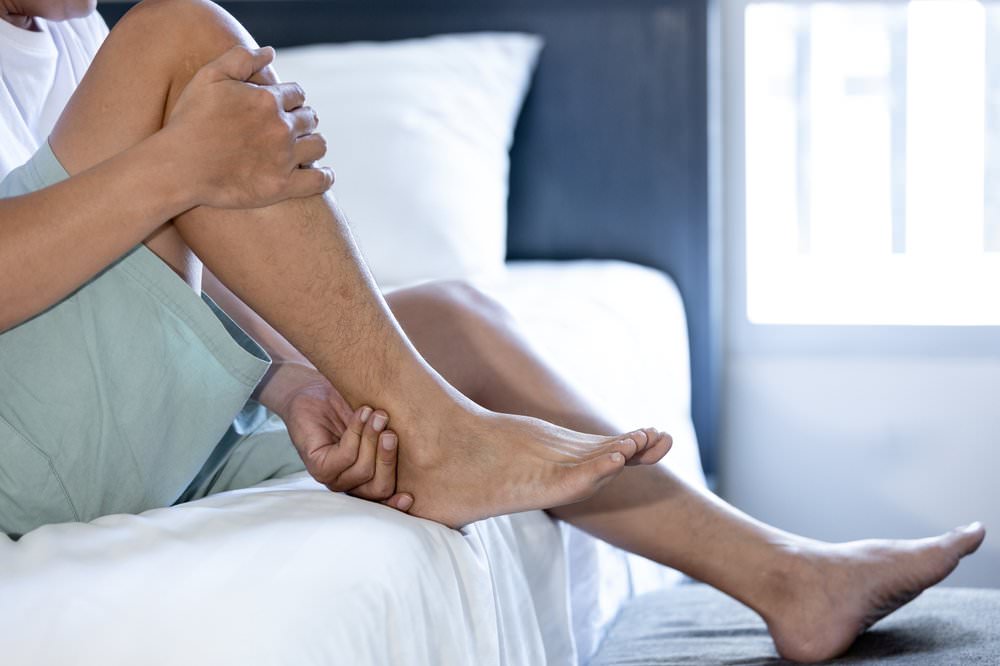Whether you’re a seasoned athlete or simply enjoy an active lifestyle, dealing with the pain and discomfort of Achilles tendinitis can be a real setback. This common overuse injury affects the Achilles tendon – the band of tissue connecting your calf muscles to your heel bone. Even though Achilles tendonitis can be a real nuisance, there are steps you can take to ease the pain and get your life back on track.
At Orthopedic Specialists of SW Florida, our team of orthopedic specialists utilize cutting-edge technology to treat conditions of the foot and ankle with a comprehensive, patient-centered approach.
Here is everything you need to know about Achilles tendonitis.
What Is Achilles Tendonitis
Achilles tendinitis is a condition characterized by the inflammation of the Achilles tendon, which is the largest tendon in the body. Located at the back of the ankle, the Achilles tendon connects the calf muscles to the heel bone. The primary role of this tendon is to facilitate movement, particularly during activities such as walking, running, and jumping.
However, repetitive stress or overuse can lead to small tears in the tendon, resulting in inflammation and pain. Achilles tendinitis commonly affects athletes and individuals who engage in activities that involve sudden bursts of movement or excessive strain on the calf muscles. It often presents as pain and stiffness in the back of the ankle, which may worsen with activity or after periods of inactivity.
If left untreated, Achilles tendinitis can become a chronic condition and significantly impact one’s mobility and quality of life
What Are Symptoms of Achilles Tendonitis?
Achilles tendonitis presents with a range of symptoms that can vary in severity from mild discomfort to debilitating pain. The most common symptom is pain and tenderness along the back of the ankle, specifically where the Achilles tendon attaches to the heel bone. This pain may be sharp or dull and can worsen during physical activity, such as running or jumping. Many individuals also experience stiffness and swelling around the affected area, making it difficult to flex or extend the foot.
As the condition progresses, the pain may become more constant and intense, even during periods of rest or inactivity. In some cases, there may be a noticeable thickening of the tendon or the development of a bony bump at the back of the heel. Additionally, individuals with Achilles tendonitis may notice a decrease in their overall strength and flexibility, making it challenging to perform activities that require push-off motions, like climbing stairs or participating in sports.
It’s important to note that the severity and combination of symptoms can vary depending on the individual and the stage of the condition. Consulting with a healthcare professional for an accurate diagnosis and appropriate treatment is essential.
How Does Achilles Tendonitis Occur?
Achilles tendonitis typically occurs as a result of overuse and repetitive strain on the Achilles tendon. There are several factors that can contribute to its development. One common cause is engaging in activities that involve excessive or sudden stress on the calf muscles and the Achilles tendon, such as running, jumping, or participating in sports like basketball or soccer. These repetitive movements can lead to micro-tears in the tendon, which triggers an inflammatory response and causes pain and swelling.
Additionally, inadequate warm-up or stretching before physical activity can increase the risk of Achilles tendonitis. Insufficient flexibility in the calf muscles and tightness in the Achilles tendon can place more strain on the tendon during movement, making it more prone to injury. Wearing improper footwear, such as shoes without proper arch support or those that do not fit properly, can also contribute to Achilles tendonitis. Improper footwear can alter the mechanics of the foot and ankle, leading to increased stress on the tendon.
Overall, Achilles tendonitis is a condition that arises from a combination of repetitive stress, inadequate warm-up/stretching, improper footwear, anatomical factors, and other contributing factors. Understanding these causes can help individuals take preventive measures and make necessary adjustments to avoid or manage this condition.
How Can You Prevent Achilles Tendonitis?
To prevent Achilles tendonitis, it is important to take certain precautions and follow a few guidelines. Firstly, it is crucial to gradually increase the intensity and duration of any exercise or physical activity that puts strain on the Achilles tendon. This helps to give the tendon time to adapt and strengthen.
Additionally, wearing appropriate footwear that provides proper support and cushioning can significantly reduce the risk of Achilles tendonitis. Stretching and strengthening exercises for the calf muscles and the Achilles tendon are also essential in maintaining flexibility and preventing injury. It is also important to listen to your body and rest when needed, especially if you feel any pain or discomfort in the Achilles tendon area.
Lastly, avoiding sudden changes in physical activity, such as suddenly increasing the intensity of a sport or exercise, can help prevent overuse and strain on the Achilles tendon. Remember, prevention is key, so it’s always better to take proactive measures to avoid Achilles tendonitis rather than dealing with the pain and rehabilitation that comes with an injury.
How Is Achilles Tendonitis Treated?
Achilles tendonitis is a common condition that causes pain and inflammation in the Achilles tendon, which connects the calf muscles to the heel bone. The treatment of Achilles tendonitis focuses on relieving pain, reducing inflammation, and promoting healing. Initially, conservative measures are usually recommended, such as rest, ice therapy, compression, and elevation (RICE), as well as over-the-counter pain medications.
Physical therapy exercises and stretches that strengthen the calf muscles and improve flexibility are commonly prescribed. In some cases, orthotic devices or heel lifts may be used to provide support and reduce stress on the tendon. It’s important to avoid activities that exacerbate symptoms and gradually return to physical activity under the guidance of a healthcare professional.
In severe cases, when conservative treatments fail to provide relief, more invasive options like corticosteroid injections or surgery may be considered. It’s crucial to consult a medical professional for an accurate diagnosis and personalized treatment plan for Achilles tendonitis.
If you are struggling with Achilles tendonitis or are in need of a comprehensive evaluation, contact our team of orthopedic specialists at Orthopedic Specialists of SW Florida for top-quality care. Contact our office today or schedule a free consultation directly from our website!


